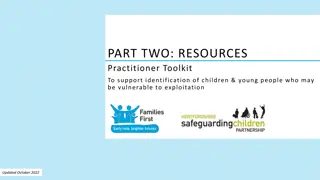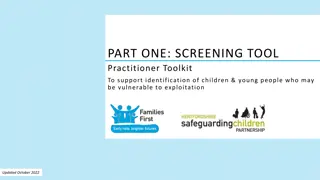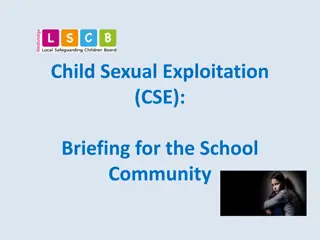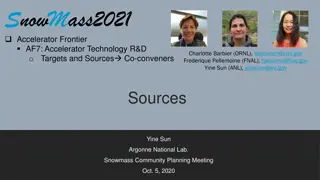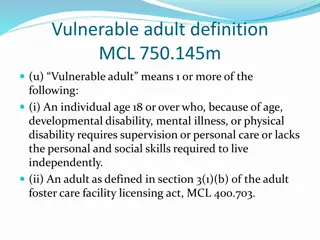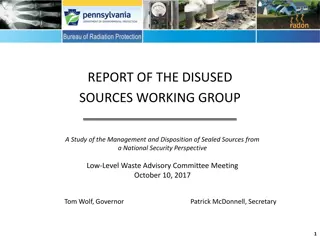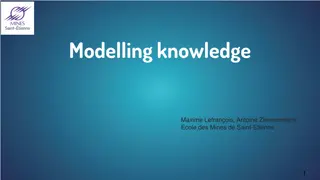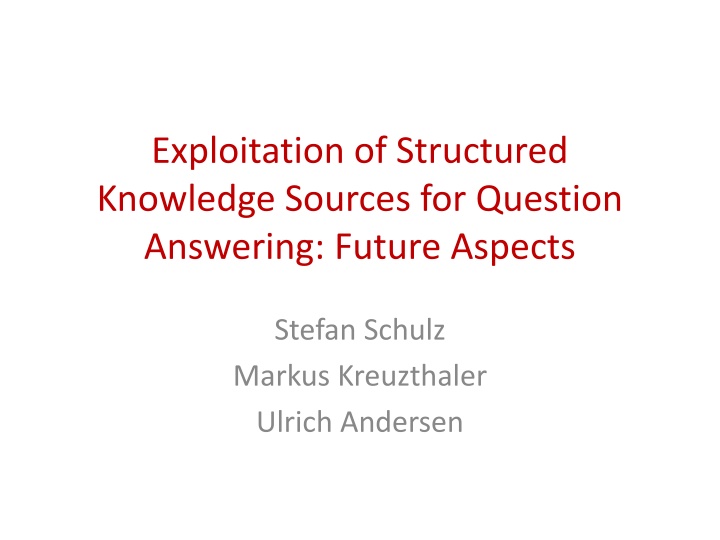
Exploration of Structured Knowledge for Answering Questions
Discover how non-ontological predications and universal truths can enhance question answering with structured knowledge sources like SNOMED CT and UMLS co-occurrence matrix. Explore examples from MEDLINE MeSH annotations and potential predicates between SNOMED semantic types. Gain insights into exploiting knowledge from external sources for improved information retrieval and understanding.
Download Presentation

Please find below an Image/Link to download the presentation.
The content on the website is provided AS IS for your information and personal use only. It may not be sold, licensed, or shared on other websites without obtaining consent from the author. If you encounter any issues during the download, it is possible that the publisher has removed the file from their server.
You are allowed to download the files provided on this website for personal or commercial use, subject to the condition that they are used lawfully. All files are the property of their respective owners.
The content on the website is provided AS IS for your information and personal use only. It may not be sold, licensed, or shared on other websites without obtaining consent from the author.
E N D
Presentation Transcript
Exploitation of Structured Knowledge Sources for Question Answering: Future Aspects Stefan Schulz Markus Kreuzthaler Ulrich Andersen
Find non-ontological predications outside SNOMED CT Examples: Insulin is a common treatment for diabetes type 1 Retinopathy is a typical late complication of diabetes mellitus Diabetes type 2 can be controlled by diet Contingent, probabilistic, default (typically true in certain contexts) Examples: Modifiers like "diabetic" or "terminal" indicate aetiology or severity of a disease Result of interpretation of term meanings Non-ontological, factoid knowledge learnt from external sources Example: The fact that there is a pre- coordinated concept "diabetic nephropathy" but not "diabetic hepatopathy" may indicate that diabetes affects the kidney but not the liver Relevance of association (which justifies pre- coordinated concepts) SNOMED CT terminological content SNOMED CT pre-coordinations SNOMED CT ontological content Universal truths (what holds for all instances of a concept without exceptions) Approach A Examples: Diabetes mellitus is a disorder of the endocrine system Insulin is a peptide Metformin contains nitrogen confidence
Possible predicates between SNOMED semantic types most of them are non-ontological and therefore not asserted in SNOMED CT Knowledge source to be explored: UMLS co-occurrence matrix
Example MEDLINE MeSH annotations MH - Adolescent MH - Adult MH - Aged MH - Coronary Disease/epidemiology MH - Diabetes Mellitus/ epidemiology/therapy MH - Dyslipidemias/epidemiology/therapy MH - Female MH - Health Knowledge, Attitudes, Practice MH - Humans MH - Hypertension/epidemiology/therapy MH - Luxembourg/epidemiology MH - Male MH - Middle Aged MH - Multivariate Analysis MH - Prevalence MH - Risk Factors MH - Young Adult MeSH Main headings Scientific paper MeSH subheadings MEDLINE bibliographic records (> 20,000,000) are manually annotated using MeSH descriptors
On MEDLINE concept / concept co-occurrences The UMLS provides a co-occurrence matrix # records in which C1 and C2 co- occur Concept 2 Concept 1 MeSH subheadings, which refine the meaning of C1. E.g. CO = complicates PA = pathology DI = diagnoses C0026683|C0001883|5|CO=4,DI=2,PA=2,SU=2,RA=1 C0026683|C0001948|1|ET=1,SU=1 C0026683|C0002475|1|ET=1,PA=1,TH=1 C0026683|C0003392|1|DT=1 C0026683|C0003466|2|SU=2,DI=1,EP=1,ET=1,PA=1 C0026683|C0003611|5|SU=4,DI=2,PA=2,CO=1,RA=1 C0026683|C0003611|10|SU=8,DI=5,PA=4,CO=3,RA=2,US=2,ET=1 C0026683|C0003614|19|SU=11,PA=10,DI=9,ET=6,CO=5,RA=2,US=2 C0026683|C0003614|21|SU=13,DI=9,CO=8,PA=7,RA=6,ET=5,US=2 C0026683|C0003615|4|SU=4,US=3,PA=2,RA=2,CO=1,DI=1 C0026683|C0003615|5|SU=3,CO=2,PA=2,RA=2,DI=1,US=1 C0026683|C0003617|41|DI=23,SU=23,PA=17,US=12,CO=10,ET=5,RA=4,EP=1 SU = surgery
Induction of SPO triples by MeSH subheading analysis Principle: define filtering conditions for each predicate type Semantic types of concepts (mapped to SNOMED CT) Co-occurrence values Subheading distribution Example: Criteria for: <C1; is treated by; C2>: C1 is of the SNOMED type Disease or Finding C2 is of one of the types Substance, Product, Device, Procedure C1 / C2 co-occurrence above threshold log-likelihood > 6.63, corresponds to p<0.01 thresholds of subheading rates DT (drug therapy) > 50% or DH (diet therapy) > 50% or TH (therapy) > 50% Implemented: Java + Lucene } checked against thresholds Non-ontological, factoid knowledge learnt from external sources SNOMED CT terminological content SNOMED CT pre-coordinations SNOMED CT ontological content
Outlook Approach included into ESICT interface soon Known limitations UMLS COOC table lacks important information from MEDLINE (document type, non-human, chemicals) Low granularity of MeSH compared to SNOMED CT Cooccurrences not aggregated in the hierarchy No distinction between hypotheses studied and scientific evidence Possible future work: Using MEDLINE source data Using text-mined content from abstracts









